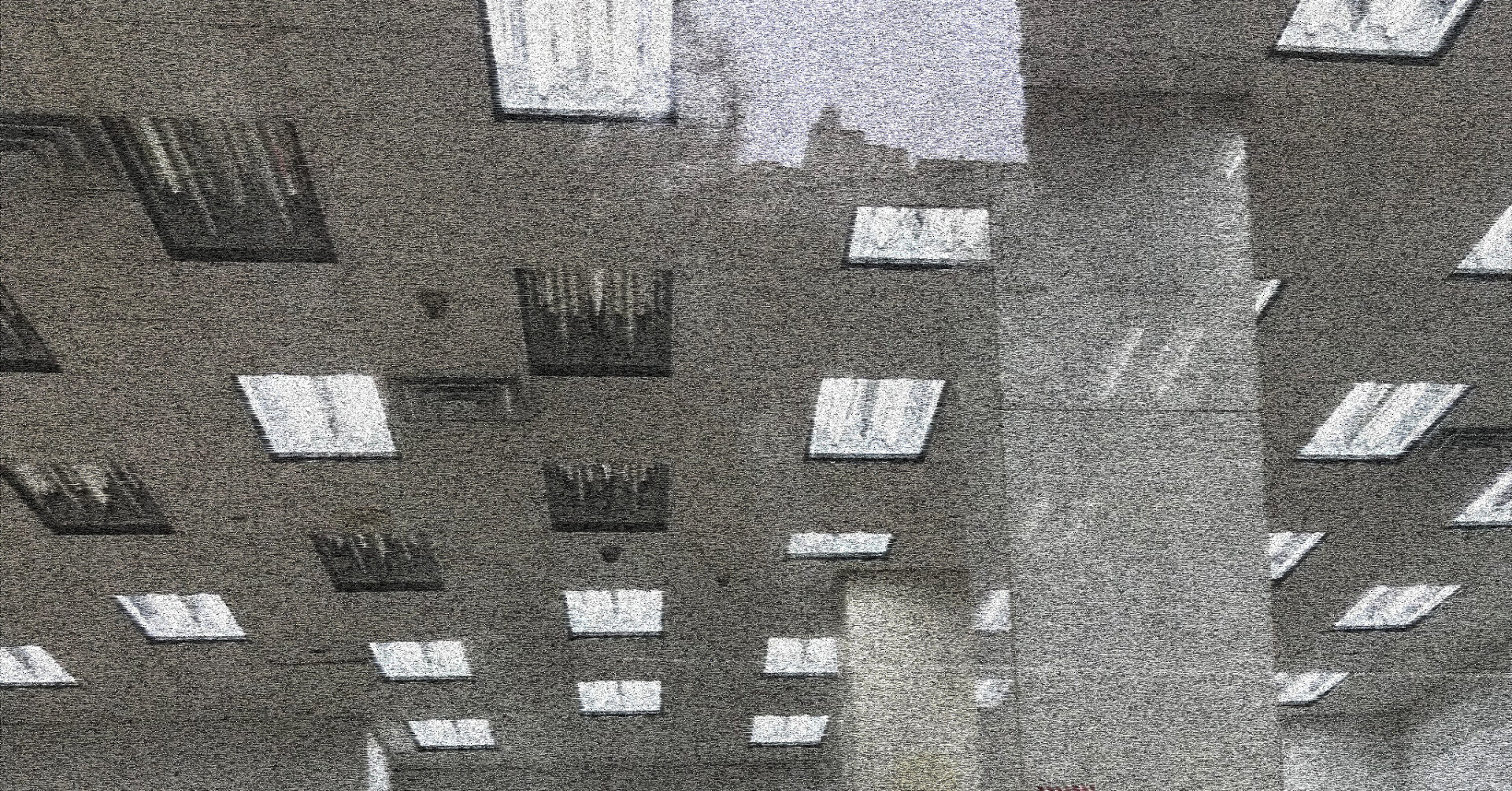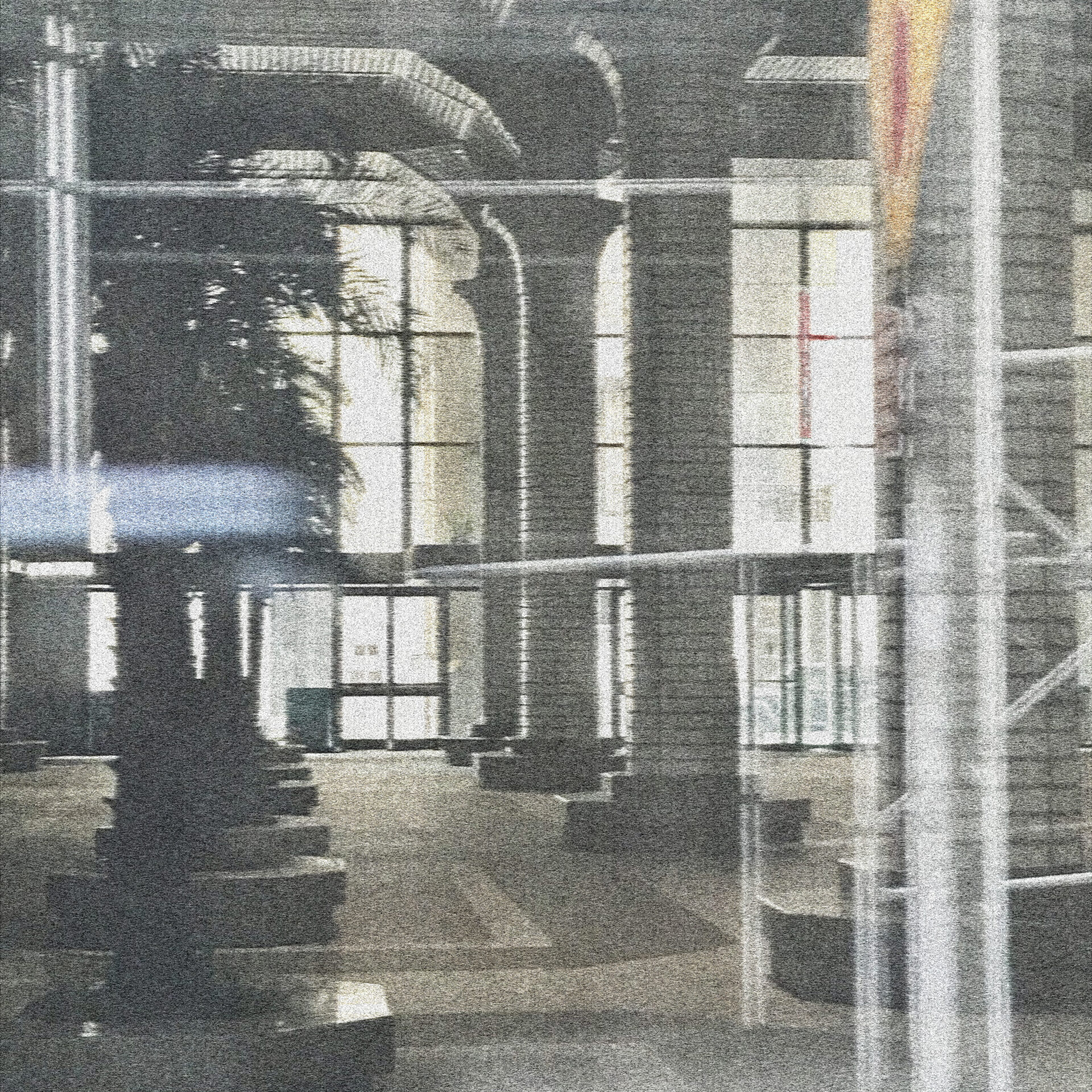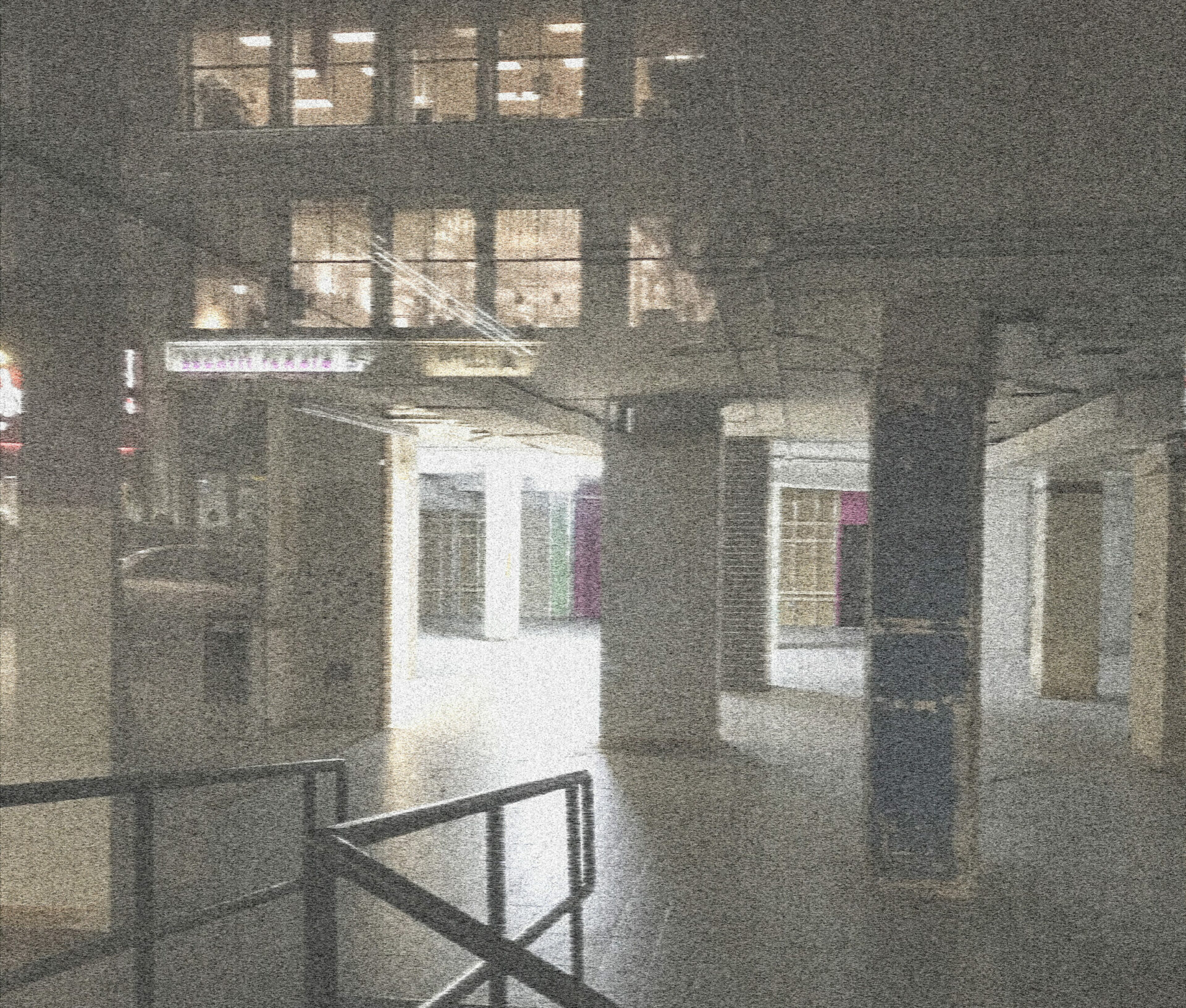“Restore, rearrange, reassemble, revamp, renovate, revise, recover, redesign, return . . . redo, respect, rent: verbs that start with ‘re’ produce Junkspace.”
– Rem Koolhaas, Junkspace
“The dream of alienation inspires landscape modification in which only one stand-alone asset matters; everything else becomes weeds or waste . . . In a global state of precarity, we don’t have choices other than looking for life in this ruin.”
– Anna Tsing, The Mushroom at the End of the World
Twenty years ago, Rem Koolhaas debuted Junkspace, one of a handful of enigmatic manifestos upon which the architect has built a supposedly iconoclastic reputation. Skewering the vacuous architectures of consumption that had emerged in the immediate post-Cold War era, the targets of Junkspace’s critique are rarely made explicit, yet the text’s prose — borrowing heavily from the vocabulary and syntax of modern advertising — conjures visions of airport terminals, malls, suburban business centers, and other semi-anonymous commercial places. For Koolhaas, junkspace is more than just the wasteful production of new consumer environments, either starchitectural or vernacular; it is also a spatial condition which folds back onto, and absorbs, existing architectures (ancient and modern alike) into the commercial logics of late-capitalist economy and culture. For Koolhaas, junkspace is as much a form of renovation and retrofit as it is a turn-of-the-millennium novelty. Privatization and commodification of architectural heritage itself is a “junkifying” of space.
Like most of Koolhaas’ writing, Junkspace combines incisive critique of the built environment’s ideological subtext with a troubling, fatalistic political cynicism. Written just prior to the attacks of September 11, 2001, the book oozes with an assurance that the end of history had indeed arrived, even as it seeks to critically unmask this assumption. Meanwhile, Koolhaas’ true political commitments (as always) remain something of a mystery. Despite an acute self-awareness, like many architects of his generation, Koolhaas’ built work has done little to challenge the aspirational status quo of prestige projects for questionable clients. Reading the missive now, one is struck by the absolutism of its vision, in which human beings are more or less at the mercy of an architecture that itself lacks the human touch of the expert architect. In 2016, cultural critic Hal Foster would push back at this very tendency in his delayed response to Junkspace, titled Running Room, asking if there might be “fissures within this world” of neoliberal excess that might create space for a more collective form of social expression.
Learning to re-inhabit this refuse of the recent past may very well require coming to terms with the trauma embodied in, and inflicted by, the built environment, while creating space for real social repair within architectures that were designed to exclude, exploit, and extract. Here in 2021 — at the end of the end of history — discussions about who, or what, sits at the reigns of architecture have taken on a new urgency amidst a global pandemic; mass uprisings against police violence and apartheid; far-right coup attempts; ongoing climate emergency; and economic immiseration fueled by a business-as-usual mentality. In both extreme and prosaic ways, the impacts of overlapping disasters are starting to become visible even to those who have been historically fortunate enough to be cocooned within the hermetic consumer and luxury environments of the metropolitan Global North. Two decades after Junkspace arrived on the heels of OMA’s own shopping “epicenter” for Prada in New York’s SoHo neighborhood, brick-and-mortar retail (what Koolhaas’ firm once glibly called “the last remaining form of public activity”) has been experiencing its own kind of quickening apocalypse, albeit one already onset by the rise of e-commerce. After remaining nearly empty for over a year — save for the essential building staff needed to maintain them — workers are beginning to repopulate business centers and office towers, unevenly and sporadically (a process complicated by fresh surges of COVID-19 infections). Meanwhile, a looming wave of evictions has just begun to crash across the United States, threatening mass displacement and houselessness at an almost inconceivable scale. Landscapes of consumerism in the overdeveloped world are being left fallow at a moment of extreme spatial injustice.
Ironically, amidst this crisis — in which the lucky among us have been confined at home and spending large parts of our lives online — photos of vacancy and abandonment have become an increasingly popular aesthetic curiosity. During the pandemic’s earlier days, dramatic photographs of hollowed-out urban centers, often accompanied by mournful paeans to a supposedly-fractured urban community, gripped social media and newsrooms alike. There has also been an increasing interest in photos of so-called “liminal spaces”, depicting eerie, transitory areas within empty buildings entirely devoid of people (corridors, waiting rooms, atria) — images carrying an otherworldly or dreamlike quality. A large portion of these liminal spaces also, unmistakably, fit Koolhaas’ criteria for junkspace, while taking the concept to a literal extreme: these are wasted places, emptied by economic and technological shocks predating the pandemic by years (or even decades). The genre is, to a great degree, dominated by abandoned malls, shopping centers, and office buildings of the recent past. And to the extent that such interior worlds evoke a kind of haunted nostalgia in their viewers, it is a specific, situated form of cultural memory of conspicuous consumption in settler North America: as widely-exported as its template may have become, the almost algorithmic “universality” of junkspace that Koolhaas wrote about at the turn of the century is rooted in a particular place and time, a moment within — not outside, or at the end of — history.
Yet, for a much larger cross-section of the American population (beyond the terminally online), aging and eroding spaces of consumption have more recently served as thresholds to something much more hopeful and forward-looking. Writing for The New Republic, Marion Renault documents the uncanny, but oddly comforting, phenomenon of COVID-19 vaccination sites popping up in otherwise derelict, even desolate spaces across the country: the “husks” of big box retailers and shopping malls; empty entertainment multiplexes; and convention centers, race tracks and casinos. Renault connects the strange, porosity of these sites to a larger, collective spatial reality during the pandemic: “We have gone through innumerable psycho-geographical somersaults since the beginning of the pandemic. Bedrooms became offices. Homes became restaurants. Convention centers and ships became hospitals. Hospitals became warzones. Trucks became morgues. Storefronts became ghost towns. Stadiums became election sites.” If the pandemic has offered glimpses of architecture emptied of human activity, it has also invited some to project new visions of how to adapt and reuse the built environment in radically different ways. Whether by dint of the passage of time, or the extreme circumstances of the moment, this reimagination is extending to structures that once seemed off-limits to social use.
Traditionally, the term “adaptive reuse” has referred to processes of retrofit and refurbishment, most often framed in terms of development and so-called urban regeneration. In the pandemic moment, it has evolved into something closer to environmental triage. These shifts have had more than just “psycho-geographical” import; there have been major political-economic consequences as well. In order to reduce the spread of COVID among New York’s unhoused population, many of the city’s vacant hotels were compelled to serve as temporary spill-over shelters, much to the chagrin of well-heeled neighbors, while plans have been slowly forming to permanently convert some hotel stock into affordable housing and single-room occupancy units. Office-to-housing conversions, technically and politically difficult as they might be, have gained traction in recent months as a way forward for the survival of central business districts. What that entails for affordability remains to be seen, especially as real estate markets rebound in wealthy municipalities. Yet in neighborhoods like Midtown Manhattan, highly dependent on the disposable income of office workers and tourists, vacancy rates remain startlingly high, with no guarantee that activity will ever return to a pre-pandemic pitch.
There are, of course, important environmental dimensions to adaptive reuse as well. With the growing recognition that buildings generate nearly 40% of global greenhouse gases, finding ways to make do with structures that already exist has become a paramount strategy for mitigating the climate crisis. But remaining questions around if, and how, the most capitalism’s most excessive architectures may be adaptively reused hinge largely on issues of climate control and reliance on fossil fuels — particularly for cheap, poorly-built, or simply now undesirable “liminal” structures built during the successive waves of urban development and exurban expansion that have defined American real estate. Very often, the same hermetic, enclosed qualities that give these buildings a haunted essence in their aged and/or vacant states are what make them environmentally untenable. Bright, fluorescent lighting beams down from ceiling tiles which hide bulky HVAC systems designed to make buildings comfortably inhabitable year-round: a seemingly banal reality that is nonetheless contingent on massive inputs of energy. Placing comfort at the center of architecture’s geophysical, and geopolitical, import in the Global North, architecture scholar Daniel Barber refers to such environments as “stranded assets,” which very well may have no future as inhabitable space in a post-carbon world. To Barber, these assets extend notions of architectural waste far beyond neoliberal junkspace; most post-War, modern architecture is predicated on carbon-intensive technologies that cannot survive a just transition. As a wave of buildings from the peak-oil era (both canonical and vernacular) gradually age and decay, the question of what to maintain, and what to preserve, presents something of a conundrum. In Koolhaas’s formulation, junkspace cannibalizes the past. But what if junkspace itself is a form of cultural heritage: specifically, that of late-capitalism, which the overdeveloped world cannot just conveniently ignore?
The nostalgic obsession with liminal space that one finds on social media may very well belie a latent desire to reclaim the ruins of this troubled way of life — to find new possibilities in landscapes of social degradation. But that “heritage,” and who gets to lay claim to it, is (and should be) a contested matter. In October 2020, the New York Times published one of the final installments of architecture critic Michael Kimmelman’s seemingly innocuous series of virtual “walks” around New York, inspired in part by a year of restricted public life (and decidedly steeped in the city’s overexalted past). This particular tour of the East Village, led by writer Lucy Sante, concluded with a lament on the neighborhood’s demise into a “safer, shinier, duller” place following its storied evolution from working-class, immigrant enclave into subcultural mecca: “Back then it was like camping out amid the ruins of multiple pasts.” The privileged stance aside, Sante’s remark still touches on something fundamental to the way that so many people experience architecture in their everyday lives. The built environment, particularly in the periphery of rich, “global cities”, is something that is essentially inherited, sometimes by free will (like the white hippies and punks of the East Village), but more often under conditions of powerlessness. Those on the margins of the capitalist city are left with spatial scraps; so often, even these environments are eventually seized as the margin itself becomes a new center in the unceasing churn of uneven development.
The identity of spaces, and the uses for which they are originally designed, are never stable, even in (relatively) normal times. But adaptive reuse is much more than a story of “how buildings learn” — in the context of American cities, it is a spatial register of deindustrialization, austerity, and a long cycle of white flight and subsequent return. It is the story of how real estate and its partners (especially the “creative class”) came to inhabit and “revitalize” the ruins of a post-war welfare state — or at least what had been spared by urban renewal — and transform them into spaces for consumption and luxury lifestyles (per Koolhaas’ formulation).
What if this dynamic were radically reversed? It may be the longest of shots, but the unique nature and mixture of current disasters — for all of the immiseration they have caused — have created some openings for reclamation, appropriation, and rescue of urban space from the jaws of real estate, right in the heart of the metropolis. There are glimmers of hope that policymakers in New York and elsewhere might push through true reform in Covid’s wake. The Barcelona municipal government’s threat to seize warehoused luxury apartments from developers is a useful model; a successful, but as-of-yet unimplemented referendum in Berlin to expropriate overpriced private housing stock from corporate landlords is another. Ultimately, the disjuncture between vacancy and need — just one facet of our more permanent state of urban crisis — is nothing new. But it has more recently taken on absurd proportions, especially in light of increased vulnerabilities wrought by contagion. At the start 2020, before the pandemic swept the entire planet, The Atlantic published an article documenting the shocking (but not at all surprising) fact that upwards of half of luxury condos that have been built in the last six years in New York City remain empty, even as the city’s shelter system was overflowing. What has unfolded since has only amplified the degree to which so many people have long been living at the edges of, and within the cracks, of a political economy designed to benefit very few. It will be incumbent on activists, organizers, and their allies to push for a far more radical form of reuse alongside, and as part of, the public acquisition of both stranded assets and newer, exclusive residences and offices for housing, education, socially-useful work, and luxury for the multiracial working class.
As larger forces bear down on future development and its discontents, we may very well be finally entering a new paradigm in which architecture’s emphasis on novel forms and style runs up against the realities of embodied carbon, supply chain disruptions, labor shortages, and a general uncertainty which, with each passing day, seems to cast shiny renderings in an increasingly fantastical light. Economic and social instability may prove adaptive reuse to be a more accessible and viable path than new construction. In any case, singular visions seem increasingly irrelevant — even a term as proprietary as “junkspace” feels anachronistic. The discipline is encountering a moment that calls for collaboration — for helping to create spaces for community outside of consumption, and sanctuaries for solidarity within the world we actually live in and desperately need to repair. Within the inherited social and spatial legacies of a sputtering neoliberal order, there are numerous practical and ethical reasons to focus more on finding “fissures” (as Foster called them) than new, resource-intensive spatial solutioneering. We don’t need totalizing visions. But we do need spatial practices that embody larger ideas about how to move differently in a changing world.
In the 2015 book The Mushroom at the End of the World: On the Possibility of Life in Capitalist Ruins, anthropologist Anna Tsing explores capitalism, ecology and precarity through the commodity chains surrounding a fungal delicacy which flourishes in dessicated industrial forests. The book offers useful, if unexpected, insights for how the practice of architecture might adapt to a broken world in dire need of maintenance and care. Tsing asserts that “World-making projects emerge from practical activities of making lives; in the process, these projects alter the planet.” However: “we have a problem with scale . . . the ability to make one’s research framework apply to greater scales, without changing the research questions, has become a hallmark of modern knowledge . . . Progress itself has often been defined by its ability to make projects expand without changing their framing assumptions.”
Architecture is an exercise in world-making that so often cannot reconcile this problem of scale. Top-down visions (both built and speculative) are imbued with simplistic framing assumptions that do not match their physical size. Likewise, a “natalist fixation” — focused on the triumphant birth, but never the full life or death of a building — ensures that designs rarely account for, or actively seek to foster, social stability over greater scales of time. Adaptive reuse, if grounded in the full social and material histories of existing sites and structures — and the social and political forces which have shaped them — could very well become a model of spatial practice that breaks these impasses. But there must also be an adaptive refusal to always fall back on the common architectural habit of building, or thinking, “from scratch.” And architects must also refuse a disciplinary identity crisis that would seek to make claims to being the sole arbiter of repair.
Some in the field have embraced this kind of deeper, cooperative relationship to the sites and people they engage with. Moving beyond extractive relationships to “urban informality,” designers Teddy Cruz and Fonna Forman work with activists and refugees along Southern California’s border with Mexico to reuse materials and adapt local building knowledge for infrastructures of cross-border citizenship. Rejecting the economistic framing of “sustainable development,” the climate + community project, an interdisciplinary team of designers, social scientists, and policymakers have helped develop Green New Deal proposals for massive-scale retrofits to public housing and educational facilities, pairing physical improvements with new community amenities such as daycare centers and bookstores. Meanwhile, the the work of French architects Lacaton & Vassal, which gained an expanded audience thanks to a surprise Pritzker Prize win in 2021, has long been predicated on a motto to “never demolish,” favoring generous adaptations of existing, often marginal buildings, including threatened social housing projects. And in a more speculative mode, Olalekan Jeyifous eschews design solutionism altogether in his series of fictional Afrofuturist interventions exploring the “postcapitalist reclaiming” of Central Brooklyn’s built environment by the predominantly Caribbean and Latinx populations that have long called it home. Such projects and practices, situated at various “peripheries” (by necessity, and according to great need), provide models for adapting architecture to the real social and political challenges — the real stakes — wrought by overlapping, enduring crises. We must now extend that work to the heart of the crisis itself.
All images by the author.



